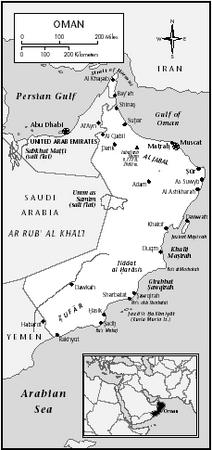History and Ethnic Relations Of Oman
History and Ethnic Relations:

Emergence of the Nation:
National Identity:
Ethnic Relations:
Urbanism, Architecture, and the Use of Space:
The contemporary urban character of Omani culture has strong ties to Indian Mogul architectural style. This is manifested in the seafront whitewashed two- and occasionally three-story residential buildings that line the road along the harbor of Matrah (Muscat's sister city). It is also seen in the style of some mosques and minarets with their slim and ornate shapes, as well as in public buildings such as the Ministry of Foreign Affairs building in Qurm. Other contemporary constructions are more eclectic in style.
Earlier architectural styles found in the towns and interior cities of Oman, such as Nizwa, Ibri, Ibra, and Bahla, reflected a pared down and simpler cultural expression and use of space that was consistent with Ibadism, a relatively austere form of Islam.
Private residences reflect the culture's concern for gendered space. Most Omani homes have formal rooms for men and their visitors, while women generally socialize in each other's private quarters. When people meet to mark various rites of passage, such as births, marriages, and deaths, the celebrations are marked by clear gendered space. It is women who visit other women on the occasion of a birth in a family. Marriage rituals entail elaborate celebrations for women only, for men only, and, when space is open, with segregated sitting areas. Deaths are similarly marked by gendered use of space, with only men attending the actual burial of a body.



Comments
Post a Comment